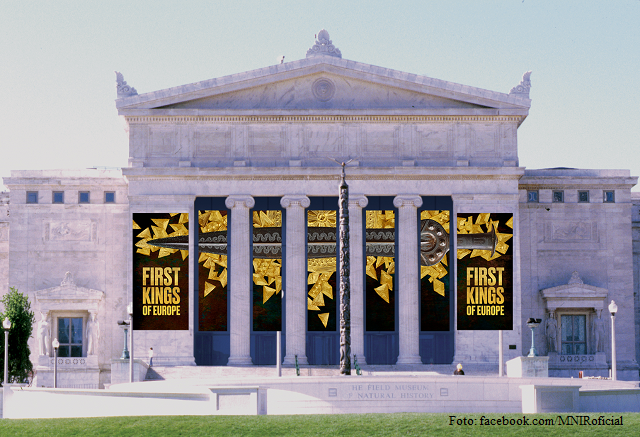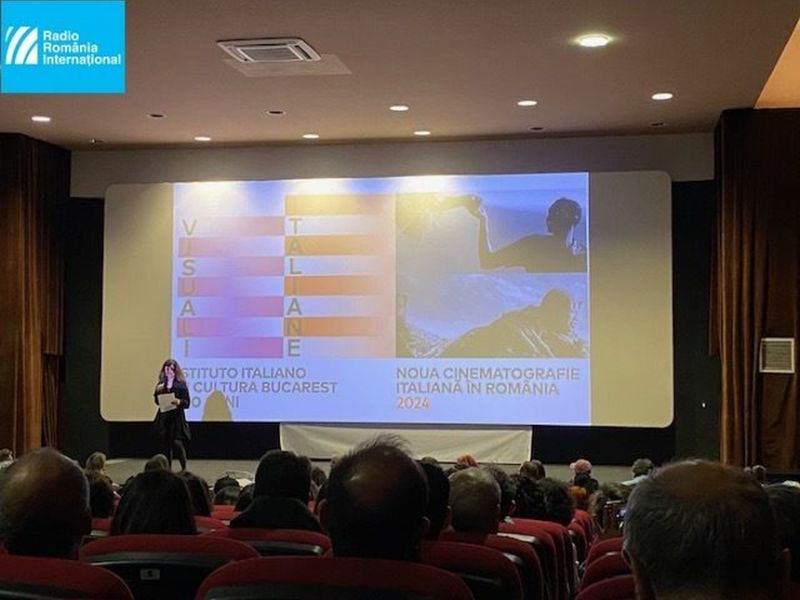First Kings of Europe
First Kings of Europe had its opening in the United States in March

Ion Puican, 27.05.2023, 13:06
An unprecedented and long-awaited international exhibition, titled First Kings of Europe had its opening at the end of March in the United States of America, at the famous Field Museum of Natural History in Chicago, an exhibition in which Romania plays an important role:. This unprecedented cultural project, initiated 6 years ago by the American museum, presents outstanding pieces from the heritage of 26 museums from 11 countries in Southeast Europe, including Albania, Bulgaria, Croatia, Montenegro, Serbia, Slovenia, Hungary and Romania. We spoke with museographer Corina Borș, coordinator of the exhibition on behalf of Romania, through the National History Museum of Romania, about this project, about its birth and the proposal of this vast exhibition. Corina Borș:
It is practically the second international exhibition in which the National History Museum of Romania has participated, in the United States and Canada. The prestigious Field Museum of Natural History in Chicago had the initiative. Despite its title, which is only intended to be attractive to the public and to mark a very special idea, the exhibition has a prehistoric archaeological theme, starting to present to this public a history dating back more than 7,000 years. The First Kings of Europe project was initiated by representatives of the Field Museum more than 6 years ago, all starting with the visit to Bucharest of the American researcher and archaeologist William Parkinson and his partner in the research efforts and then the creation of the exhibition, Attila Gyucha. The theme of the exhibition is an archaeological one, focused on the prehistoric period, starting from the Neolithic to the end of the second Iron Age. It’s an exhibition that invites the public to explore the rise to power of the first dynasts, as they are called today, kings and queens of ancient Europe. An invitation to discover how egalitarian farming communities first developed the concepts of power, social inequality and hierarchy. It is a journey back in time, far back to almost 5,000 BC, a journey marked by a whole series of prehistoric artefacts of prime importance from the collections of 26 museums in 11 South-East European countries. These prehistoric artefacts, represented by tools, weapons, sculptures, ornaments, a whole series of other elements made of ceramics, metal, bone or stone, are an invitation to discover prehistoric life in these ancient societies of the Balkan region. The exhibition is an invitation to adventure, on a series of exchange routes that shaped the world as we know it today. Likewise, the artifacts mark landmarks related to the ceremonies of those distant times, from the reconstruction of a Neolithic altar to a funerary scene. Last but not least, there are particularly precious objects, such as weapons, but also power insignia that turned the warriors into, let’s call them, dynasts.
Museographer Corina Borș explained the structure of the exhibition:
The exhibition is structured around four major themes, and is organized chronologically, from the Neolithic to the first Iron Age. The first section, dedicated to the Neolithic period, explores how the lands on which these prehistoric civilizations developed before the appearance of the first kings would have looked. The period of the Copper Age or Eneolithic is the one in which, practically, we can talk about the appearance of the first precious metal objects, among the oldest in the world, discovered on the current territory of Romania and Bulgaria. The third section, dedicated to the Bronze Age, is centered on the emergence of new routes of power and, properly speaking, the emergence of the first dynasties, in the sense in which we could speak of royalty. Finally, the one in the last part of the exhibition, the one on the Iron Age, practically the first millennium before Christ, is the one dedicated to the birth of the idea of royalty.
But what is Romania’s contribution to this project? Corina Borș explained:
From Romania, 6 museums participate in this important exhibition, the coordinator of the project being the National History Museum of Romania. It is a partnership with the National History Museum of Transylvania in Cluj, the National Museum Complex in Piatra-Neamț, the Gumelnița Civilization Museum in Oltenița, the Oltenia Museum in Craiova and the Buzău County Museum. From the collections of the 6 mentioned museums, a selection of 90 pre- and proto-historical artifacts, dating from the Neolithic period, the Bronze Age and up to the second Iron Age, are participating.
Corina Borș also told us how the public across the ocean received the exhibition:
At the moment, it is difficult to answer this question, because we are only at the beginning of the presentation of the exhibition in the second location. In an exhibition run of over two and a half years, three destinations were considered, namely New York, Chicago and Gatineau in Canada. We believe that the exhibition will be a real success, being a completely new theme for the American public. But, it is fair to wait for their reactions and opinions. (MI)





























